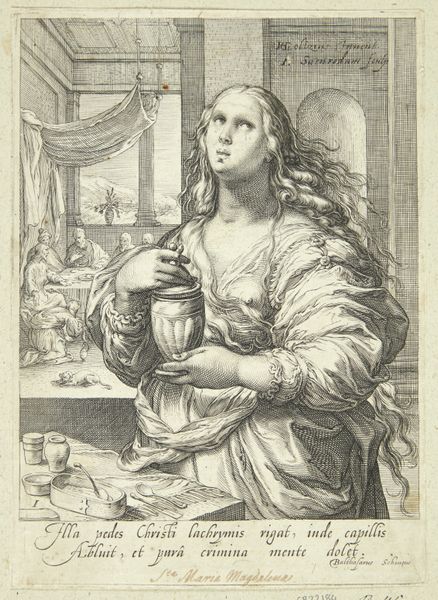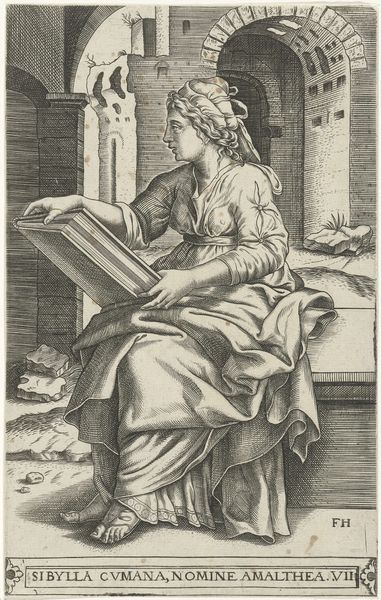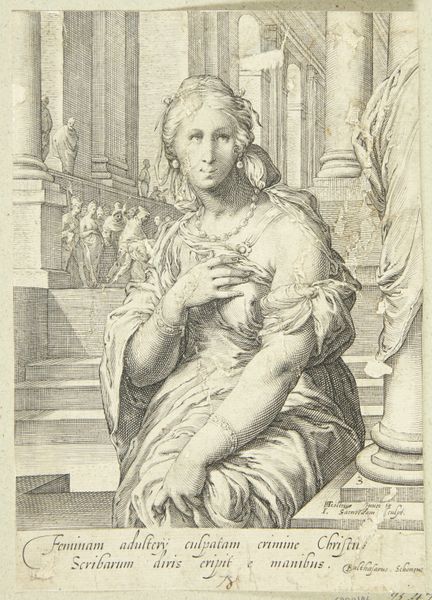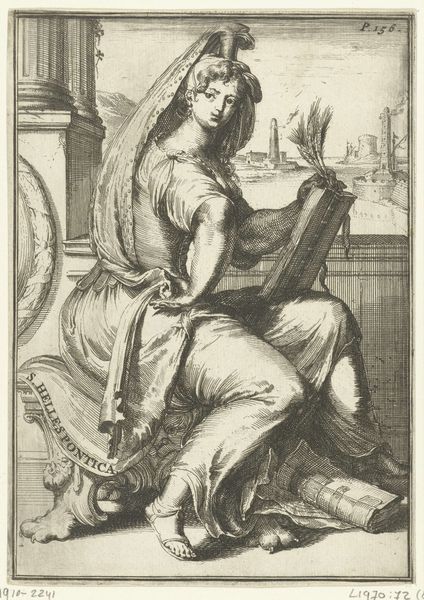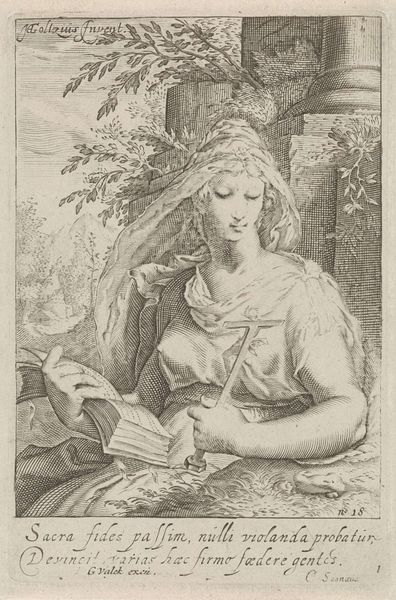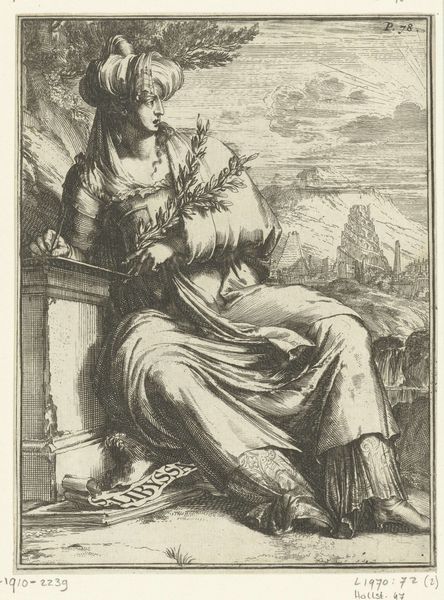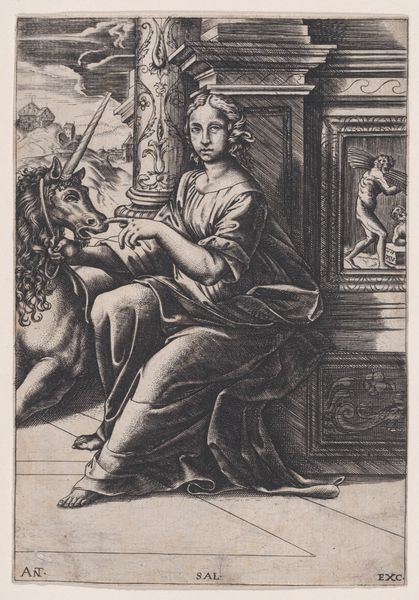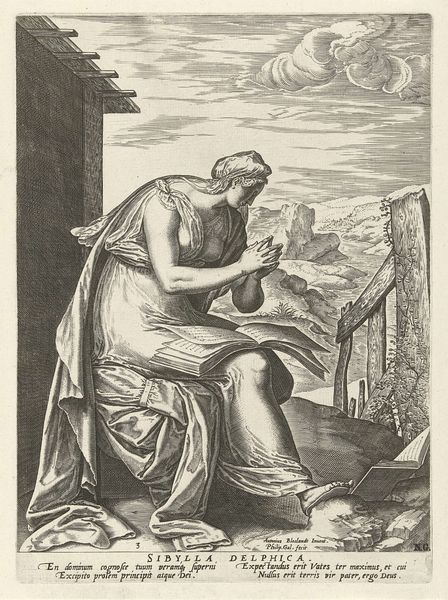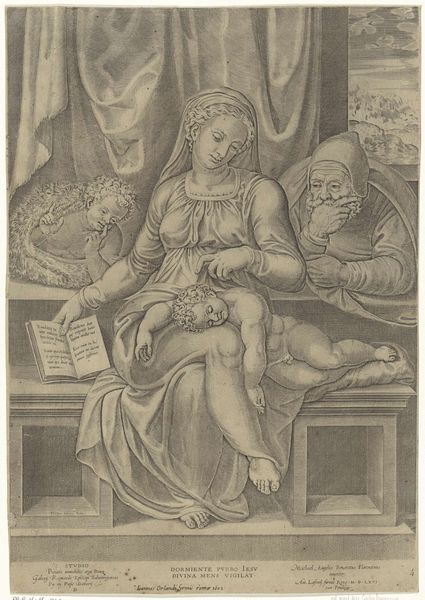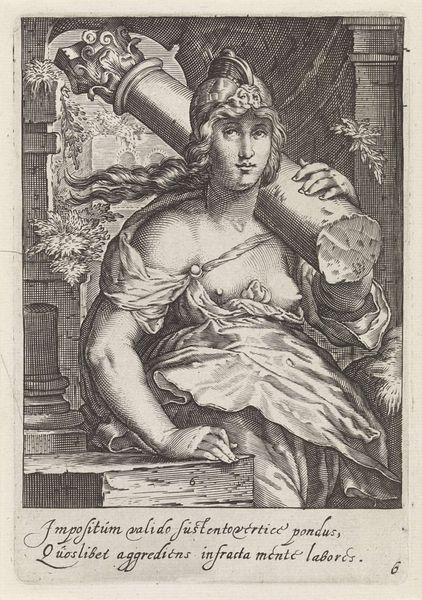
print, engraving
#
portrait
#
allegory
# print
#
mannerism
#
history-painting
#
engraving
Dimensions: height 157 mm, width 103 mm
Copyright: Rijks Museum: Open Domain
Curator: Let’s consider Jacob Matham’s "Temperantia," or "Matigheid" as it’s known in Dutch, an engraving dating from 1597 that we have here at the Rijksmuseum. Editor: It’s a rather stark image, isn’t it? Despite the flowing garments and idealized figure, there's something almost… utilitarian about the composition. Curator: Indeed. Matham presents Temperance as an allegory—a figure embodies an abstract virtue, common during the Mannerist period. It served didactic and often moralizing purposes, reflecting specific societal values of the time. Editor: The materiality of that virtue is what I find fascinating. She's diluting wine or some other liquid— a practical, tangible action. And look at the tools on the table: a spoon and a compass, implying precision and measured application, really emphasizes this connection to the earthly and practical. Curator: That controlled pouring certainly captures the essence of temperance, doesn't it? Avoiding extremes, finding the balance. But also reflect a deeper understanding about the humanist concepts flourishing at the time and a call towards the viewer. The inscription "Nec mihi deliciae gratae, nec faeda voluptas: Contemno luxum, vili contenta paratu", reinforce those moral claims: “Neither agreeable delicacies, nor foul pleasure for me; I despise luxury, content with cheap preparations.” Editor: The lines are so precise! This meticulous rendering and detail point towards the artist’s technical skill, I bet this took a long time and great skill to achieve this level of precision. The landscape setting gives the impression that it may relate to every kind of audience or even classes, where "Temperantia" or the virtue of temperance should permeate through every instance. Curator: Right. Beyond technical virtuosity, consider Matham’s position within the artistic circles of Haarlem, and his relationship to printmaking as a vehicle for disseminating moral and intellectual ideas, especially at a time when the Dutch Republic was forming its own identity. The print's purpose reaches a wider audience. Editor: Considering that engravings were often reproduced, how did accessibility of this image influenced common behavior and consumption? Curator: Interesting question! The image also serves as a statement on cultural identity. Printmaking's affordability made such moral lessons available across different societal groups. It became less a matter of exclusive knowledge and more a call to shared values. Editor: Well, looking closer has given me a much better sense of how artistic and social threads were carefully woven into this beautiful and somewhat austere, allegorical piece. Curator: For me too, this recontextualizes what I considered about Matham's use of the Temperance allegory and provides more appreciation to it.
Comments
No comments
Be the first to comment and join the conversation on the ultimate creative platform.
